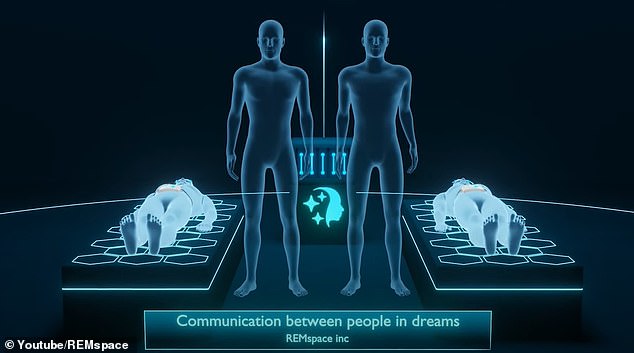Scientists have brought science fiction one step closer to reality by achieving the first two-way communication between individuals during lucid dreams.
In an experiment that looks like a scene from the movie ‘Inception,’ REMspace – a California-based startup that designs technology to improve sleep and lucid dreaming – supposedly exchanged a message between two people who were asleep.
The company used “specially designed equipment” that included a “server,” an “appliance,” “WiFi,” and “sensors,” but did not specify the exact technology they used.
Study participants were sleeping in separate houses when REMspace researchers transmitted a word created through a unique language to each other.
A neurotechnology company claims to have achieved the first two-way communication between individuals during lucid dreams
REMspace CEO and Founder Michael Raduga said: “Yesterday, communicating in dreams seemed like science fiction.”
‘Tomorrow it will be so common that we will not be able to imagine our lives without this technology.
“This opens the door to countless commercial applications, reshaping the way we think about communication and interaction in the dream world.”
The technology has not yet been reviewed or replicated by scientists. But if validated, it would be a major milestone for sleep research and could provide applications for mental health treatment, skills training and more, REMspace said.
REMspace used “specially designed equipment” to allow two people to successfully exchange a simple message while lucid dreaming, the company claimed.
Lucid dreaming is when a person is aware that they are dreaming while still in the dream state.
This allows them to take self-directed actions in their dreams, rather than randomly interacting with the “dream world” without any sense of control.
This phenomenon occurs during REM sleep, or rapid eye movement sleep, when dreams normally occur.
REMspace has not revealed exactly what equipment was used in their experiment, but He said the experiment involved a “gadget” that tracked participants’ brain waves and other biological data during the experiment.
It also involved a ‘server’ that can detect when participants enter a lucid dream and generate messages that are transmitted to them.
Two study participants slept in separate houses while the device remotely tracked their brain waves, which fed data to the server.
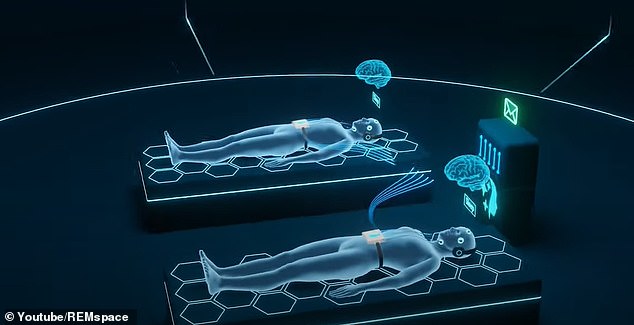
Two study participants slept at home while the device remotely tracked their brain waves, which fed data to the server.

Once the server detected that a participant had entered a lucid dream, it generated a random word and transmitted it to them via headphones.
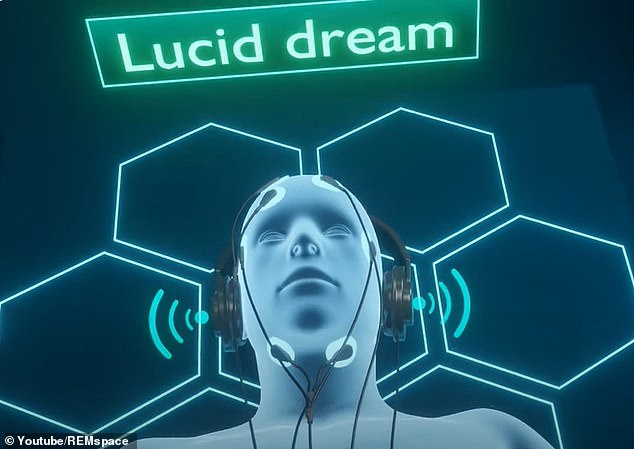
Eight minutes later, the second participant entered a lucid dream. The server transmitted the first participant’s stored message to him, which he repeated upon waking up.
Once the server detected that a participant had entered a lucid dream, it generated a random word from the special language and transmitted it to them via headphones.
The participant then repeated this word in their dream and that response was captured and stored on the server.
Eight minutes later, the second participant entered a lucid dream. The server transmitted the first participant’s stored message to her, which she repeated upon waking up.
REMspace was able to repeat this experiment with another pair of participants. But the study will have to undergo a rigorous review before the company can definitively say that they achieved the dream communication.
Confident in his results, Raduga is widely known for his ambitious (and sometimes strange) experiments.
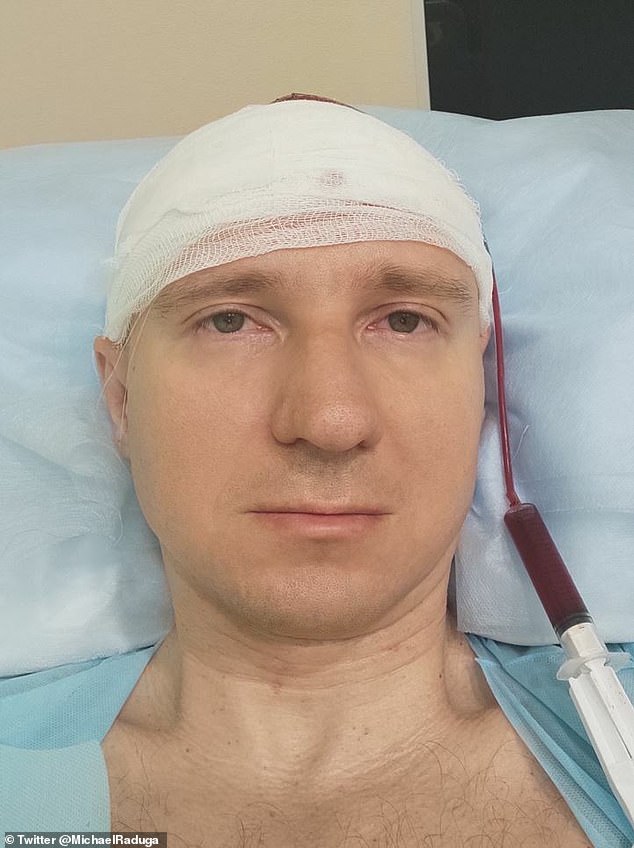
Raduga, 40, had an electrode implanted in his brain to ‘control his dreams’
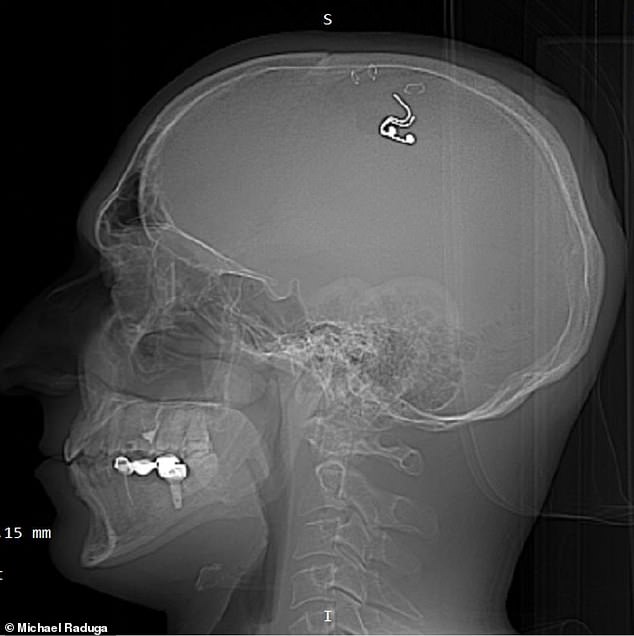
The electrode implant is made of platinum and silicone. Raduga stated that electrical triggers sent to this electrode can influence the course of lucid dreams.
In 2023, he risked his life when he attempted to implant a microchip into his own brain to control his dreams.
The 40-year-old, who has no training in neurosurgery, compared his extremely dangerous experiment to the movie Inception and claimed his “electrode” could one day change the course of lucid dreaming.
Gruesome footage of the procedure shows him holding his skin with clips while knocking out the back of his skull with a drill he found in a hardware store.
He inserted the chip into his brain after watching hours of neurosurgery videos on YouTube and practicing on five sheep; He didn’t tell anyone about his plans.
Finally, the chip was removed at the hospital after five weeks.
The highly dangerous study did not appear in any peer-reviewed journal and is not supported by any university, but Raduga claimed he needed to do it himself.
“I’m glad I survived, but I was ready to die,” he told DailyMail.com in an exclusive interview last year.
Now it has set its sights on another ambitious goal: enabling real-time communication in lucid dreams.
“We believe that REM sleep and related phenomena such as lucid dreaming will become the next big industry after AI,” Raduga said.

